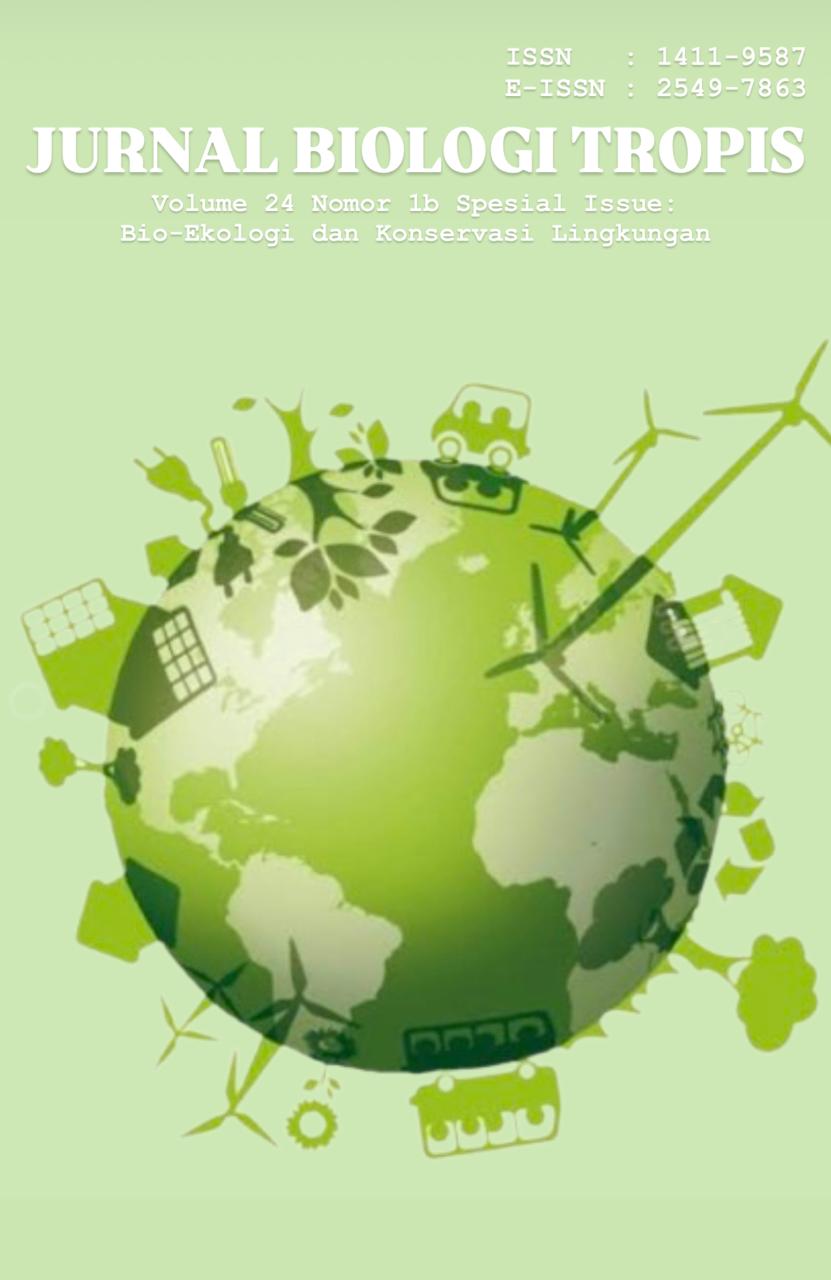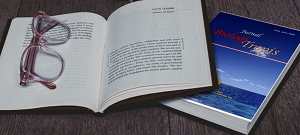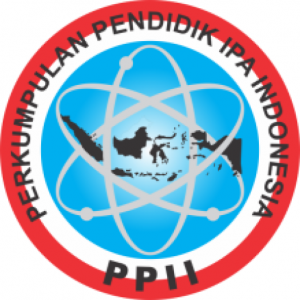Emergencies in The Maritime Field A Literatur Review
Authors
Rika Kamila Salsabila , Nilam Nurmilatun Kamilah , Atina Rizki Putri , Prananda Rizki Pramudia , Rian Pramudya , Ni Wayan Citra Ayu Saraswati , Tazkiyah Arafah Amatullah , Ilsa HunaifiDOI:
10.29303/jbt.v24i2b.7800Published:
2024-12-25Issue:
Vol. 24 No. 2b (2024): Special IssueKeywords:
Blue ring octopus, decompression sickness, emergencies in the maritime field, jellyfish, stings and bites of marine animals, sea urchins, puffer fish, lionfish, stingray, stone fish.Articles
Downloads
How to Cite
Downloads
Metrics
Abstract
Indonesia is the largest archipelagic country in the world, with extensive coastal and oceanic areas and a high diversity of marine biodiversity. The coastal regions of Indonesia serve as habitats for various types of marine animals that possess both beauty and potential dangers, particularly from marine animal stings. In addition to marine animal stings, decompression sickness also poses a serious emergency in the maritime context. The purpose of this article is to provide new insights into the importance of understanding and recognizing decompression syndrome, as well as the bites and stings caused by marine animals, as early indicators of emergencies in the maritime field. This understanding can enhance early detection, appropriate treatment, and awareness of complications arising from maritime emergencies. The article will focus on marine animals such as the blue-ringed octopus, sea urchins, pufferfish, lionfish, jellyfish, stingrays, and stonefish, which are associated with emergencies in the maritime field. Data sources were gathered through electronic searches on library databases including Google Scholar, ProQuest, MDPI, and PubMed to find articles discussing "emergencies in the maritime field.".
References
Ahmad, A., Gobel, F. A., & Mahmud, N. U. (2023). Faktor Risiko Terjadinya Dekompresi pada Penyelam di Kabupaten Kepulauan Selayar. Journal of Muslim Community Health, 4(4), 23-35.
Al Dhuhaibat, Z., & Zarzour, T. (2023). Tetrodotoxin poisoning due to pufferfish ingestion in the United Arab Emirates. Cureus, 15(1).
Albins, M.A. and Hixon, M.A. (2008) ‘Lionfish not a roaring success for coral reefs’, Nature, 454(7202), pp. 265–265. Available at: https://doi.org/10.1038/454265f.
Asakawa, M., Matsumoto, T., Umezaki, K., Kaneko, K., Yu, X., Gomez-Delan, G., ... & Ohtsuka, S. (2019). Toxicity and toxin composition of the greater blue-ringed octopus Hapalochlaena lunulata from Ishigaki Island, Okinawa Prefecture, Japan. Toxins, 11(5), 245.
Alvarez, F. and Estrada, R. (2018) Mobility for accessibility, Urban growth and access to opportunities: A challenge for Latin America.
Badran, S., Eldos, Y., Hoffman, R. J., Obaray, S., Sivakumar, B., & Glass, G. E. (2022). Extremity Ischemia After Jellyfish Envenomation: A Case Report and Systematic Review of the Literature. The Journal of Emergency Medicine, 63(4), 507-519.
Barnett, S., Saggiomo, S., Smout, M., & Seymour, J. (2017). Heat deactivation of the stonefish Synanceia horrida venom-implications for first-aid management. Diving and hyperbaric medicine, 47(3), 155.
Bralow, L. M., & Piehl, M. (2018). Barotrauma and arterial gas embolism: a diving emergencies simulation case for emergency medicine residents. MedEdPORTAL, 14, 10788.
Brighton Ndandala, C., Mustapha, U. F., Wang, Y., Assan, D., Zhao, G., Huang, C., ... & Chen, H. (2023). The perspective of fish venom: An overview of the physiology, evolution, molecular and genetics. Frontiers in Marine Science, 10, 1085669.
Cunha, S. A., & Dinis-Oliveira, R. J. (2022). Raising awareness on the clinical and forensic aspects of jellyfish stings: A worldwide increasing threat. International journal of environmental research and public health, 19(14), 8430.
Deliana, M., Pusparianda, D., & Putri, R. N. (2023). The Experience of Marine Tribe Communities Regarding Handling Emergencies Due to Venomous Marine Animal Strings on The Coast of Bintan Regency, Riau Islands. Jurnal Keperawatan Dan Fisioterapi (JKF), 6(1), 100-108.
Deliana, M., Pusparianda, D., & Santa Novita, Y. S. (2022). Kejadian Kegawatdaruratan Akibat Sengatan Hewan Laut Berbisa di Kabupaten Bintan Kepulauan Riau. Jurnal Ilmiah JKA (Jurnal Kesehatan Aeromedika), 8(2), 60-63.
DeLoughery, E. P. (2022). There’s something in the water: an overview of jellyfish, their stings, and treatment. International Maritime Health, 73(4), 199-202.
Divers Alert Network (2012) Hazardous Marine Life Injuries Provider.
Duke, H. I., Widyastuti, S. R., Hadisaputro, S., & Chasani, S. (2017). Pengaruh kedalaman menyelam, lama menyelam, anemia terhadap kejadian penyakit dekompresi pada penyelam tradisional. Jurnal kesehatan masyarakat indonesia, 12(2), 12-18.
Edgar, M., Franco, M. A., & Dainer, H. M. (2021). Case series of arterial gas embolism incidents in US Navy pressurized submarine escape training from 2018 to 2019. Military medicine, 186(5-6), e613-e618.
Elston, C., Cowley, P. D., von Brandis, R. G., & Lea, J. (2022). Stingray habitat use is dynamically influenced by temperature and tides. Frontiers in Marine Science, 8, 754404.
Elston, D. M. (2006). Aquatic antagonists: lionfish ( Pterois volitans). Cutis, 77(4), 215-216.
Erlina, Y. (2018). Analisis Faktor Yang Berhubungan Dengan Kejadian Abortus Inkomplit Di Rsud Kota Bekasi. Jurnal Ilmiah Keperawatan, 7(1).
Fitriasari, E., Untari, N. K. S. D., & Fitra, N. A. (2024). Risk Factors for Decompression Sickness. Jurnal Multidisiplin Indonesia, 3(2), 3806-3818.
Habib, H., Salim, J., Nugroho, Y. D., Amansyah, F., & Pramana, G. A. (2018). Characteristics of Marine Envenomation Cases in Kepulauan Seribu District Hospital, Indonesia. Cermin Dunia Kedokteran, 45(12), 887-891.
Haddad Junior, V., & Haddad Junior, V. (2021). Ingestion of Venomous Aquatic Animals: Toxinology, Clinical Aspects, and Treatment. Medical Emergencies Caused by Aquatic Animals: A Biological and Clinical Guide to Trauma and Envenomation Cases, 301-334.
Homsi, A., Hassan, N., Hamad, I., & Qasem, R. (2023). A case of puffer fish poisoning from United Arab Emirates. Oman medical journal, 38(3), e510.
Hornbeak, K. B., & Auerbach, P. S. (2017). Marine envenomation. Emergency Medicine Clinics, 35(2), 321-337.
Hüseyinoğlu, M. F., & Öztürk, B. (2018). Lionfish Invasion and Its.
Howle, L. E., Weber, P. W., Hada, E. A., Vann, R. D., & Denoble, P. J. (2017). The probability and severity of decompression sickness. PLoS One, 12(3), e0172665.
Hutomo, F. P., Prasetyo, M. Z., Fariqhan, D. Z., Atmaja, I. M. B., Ambarah, G. Z., Utomo, D. H., ... & Gunawan, S. E. (2022). Stroke Terkait Penyakit Dekompresi pada Penyelam. Lombok Medical Journal, 1(3), 175-184.
Hwai, A. T. S., Ismail, A. K., Miyake, H., Karunarathne, K. D., Na’im Ab Razak, M., Nilamani, N., ... & Kwang, S. Y. (2022). Harmful Jellyfish Stings.
Indonesia, P. D. P. (2021). Panduan umum praktik klinis penyakit paru dan pernapasan. Jakarta: Perhimpunan Dokter Paru Indonesia.
Jacups, S. P., & Currie, B. J. (2008). Blue-ringed octopuses: a brief review of their toxicology. Northern Territory Naturalist, (20), 50-57.
Jani, B. K., & Mohanty, C. (2019). Hazardous Marine Life: Stingray Injury and Its Multimodal Management. Journal of Marine Medical Society, 21(2), 182-185.
Jelinek, G.A. (1996) ‘Marine envenomation’, Current Therapeutics, 37(1), pp. 43–47. Available at: https://doi.org/10.1007/s42399-020-00490-y.
Junior VH, Cardoso JLC, Neto D. Injuries by marine and freshwater stingrays: history, clinical aspects of the envenomations and current status of a neglected problem in Brazil. J Venom Anim Toxins Incl Trop Dis. 2013;19(1):16.
Junior, V. H., Cardoso, J. L. C., & Neto, D. G. (2013). Injuries by marine and freshwater stingrays: history, clinical aspects of the envenomations and current status of a neglected problem in Brazil. Journal of venomous animals and toxins including tropical diseases, 19(00), 1-11.
Junior, V. H. (2021). Medical Emergencies Caused by Aquatic Animals: A Biological and Clinical Guide to Trauma and Envenomation Cases. Springer Nature.
Jusmawati, J., Arsin, A. A., & Naiem, F. (2016). Faktor risiko kejadian decompression sickness pada masyarakat nelayan peselam tradisional Pulau Saponda. Media kesehatan masyarakat indonesia, 12(2), 63-69.
Jüttner, B., Wölfel, C., Camponovo, C., Schöppenthau, H., Meyne, J., Wohlrab, C., ... & Muche-Borowski, C. (2023). S2k guideline for diving accidents. GMS German Medical Science, 21.
Lakkis, N. A., Maalouf, G. J., & Mahmassani, D. M. (2015). Jellyfish stings: a practical approach. Wilderness & environmental medicine, 26(3), 422-429.
Lako, J. V., Naisilisili, S., Vuki, V. C., Kuridrani, N., & Agyei, D. (2023). Local and Traditional Ecological Knowledge of Fish Poisoning in Fiji. Toxins 2023, 15, 223.
Lalloo, D. (2010). Venomous bites and stings. Medicine, 38(1), 52-55.
Lennox-Bulow, D., Smout, M., Loukas, A., & Seymour, J. (2023). Stonefish (Synanceia spp.) Ichthyocrinotoxins: An ecological review and prospectus for future research and biodiscovery. Toxicon, 107329.
Li, A., Yu, H., Li, R., Yue, Y., Yu, C., Geng, H., ... & Li, P. (2022). Jellyfish Nemopilema nomurai causes myotoxicity through the metalloprotease component of venom. Biomedicine & Pharmacotherapy, 151, 113192.
Linggayani, N. M. A., & Ramadhian, M. R. (2017). Penyakit Caisson pada Penyelam. Jurnal Kesehatan dan Agromedicine, 4(2), 348-353.
Mantas, A., Labbe, V., Loryan, I., & Mihranyan, A. (2019). Amorphisation of free acid ibuprofen and other profens in mixtures with nanocellulose: dry powder formulation strategy for enhanced solubility. Pharmaceutics, 11(2), 68.
McDonagh, T., & Metra, M. (2023). 2021 ESC Guidelines for the diagnosis and treatment of acute and chronic heart failure. Russian journal of cardiology, 28(1), 5168.
Mitchell, S. J., Bennett, M. H., Bryson, P., Butler, F. K., Doolette, D. J., Holm, J. R., ... & Lafère, P. (2018). Pre-hospital management of decompression illness: expert review of key principles and controversies. Diving and Hyperbaric Medicine, 48(1), 45.
Mitchell, S. J., Bennett, M. H., & Moon, R. E. (2022). Decompression sickness and arterial gas embolism. New England Journal of Medicine, 386(13), 1254-1264.
Mitchell, S. J. (2024). Decompression illness: a comprehensive overview. Diving and Hyperbaric Medicine, 54(1Suppl), 1.
Nader, M. R., Indary, S., & Boustany, L. E. (2012). The puffer fish Lagocephalus sceleratus (Gmelin, 1789) in the Eastern Mediterranean.
Neuman, T. S. (2002). Arterial gas embolism and decompression sickness. Physiology, 17(2), 77-81.
Otani N, Utama T. Keracunan Laut. 2020;2288–92.
Padang, A., Tuasikal, T., & Subiyanto, R. (2019). Kandungan gizi bulu babi (Echinoidea). Agrikan: Jurnal Agribisnis Perikanan, 12(2), 220-227.
Pollock, N. W., & Buteau, D. (2017). Updates in decompression illness. Emergency medicine clinics, 35(2), 301-319.
Rambla-Alegre, M., Reverté, L., Del Río, V., de la Iglesia, P., Palacios, O., Flores, C., ... & Diogène, J. (2017). Evaluation of tetrodotoxins in puffer fish caught along the Mediterranean coast of Spain. Toxin profile of Lagocephalus sceleratus. Environmental research, 158, 1-6.
Risdall, J.E. (2016) ‘Decompression illness’, Ernsting’s Aviation and Space Medicine: Fifth Edition, pp. 567–577. Available at: https://doi.org/10.1201/b13197-44.
Saggiomo, S. L., Firth, C., Wilson, D. T., Seymour, J., Miles, J. J., & Wong, Y. (2021). The geographic distribution, venom components, pathology and treatments of stonefish (Synanceia spp.) venom. Marine Drugs, 19(6), 302.
Schult, R. F., Acquisto, N. M., Stair, C. K., & Wiegand, T. J. (2017). A case of lionfish envenomation presenting to an inland emergency department. Case Reports in Emergency Medicine, 2017(1), 5893563.
Sümen, S. G., & Öztürk, B. (2020). How to Manage Lionfish Envenomation?. International Journal of Environment and Geoinformatics, 8(1), 106-109.
Suryanti, S., Fatimah, P. N. P. N., & Rudiyanti, S. (2020). Morfologi, Anatomi dan Indeks Ekologi Bulu Babi di Pantai Sepanjang, Kabupaten Gunungkidul, Yogyakarta. Buletin Oseanografi Marina, 9(2), 93-103.
Tay, T. K. W., Chan, H. Z., Ahmad, T. S. T., Teh, K. K., Low, T. H., & Wahab, N. A. (2016). Stonefish envenomation of hand with impending compartment syndrome. Journal of Occupational Medicine and Toxicology, 11, 1-4.
Tomlison H, ELston DM. Aquatic Antagonists : Lionfish (Pterois volitans). Cutis. 2018;102(4):232–4.
Tyastara, I. G. M., Mutiarayani, D., Utami, F. Y., Sungkar, H., Rizkika, L. H., Nazhifah, N., & Ommy, I. G. N. (2022). Caisson Disease among Recreational Divers: Review Literature. Green Medical Journal, 4(3), 93-99.
Wang, H., Zhao, W., Ding, B., Zhang, Y., Huang, X., Liu, X., ... & Ding, J. (2021). Comparative lipidomics profiling of the sea urchin, Strongylocentrotus intermedius. Comparative Biochemistry and Physiology Part D: Genomics and Proteomics, 40, 100900.
Widyastuti, S. R., Hadisaputro, S., & Munasik, M. (2019). Berbagai Faktor yang Berpengaruh Terhadap Kualitas Hidup Penyelam Tradisional Penderita Penyakit Dekompresi (Doctoral dissertation, School of Postgraduate).
Wijaya, D. R., Abdullah, A. Z., & Palutturi, S. (2018). Faktor Risiko Masa Kerja Dan Waktu Istirahat Terhadap Kejadian Penyakit Dekompresi Pada Nelayan Penyelam Di Pulau Barrang Lompo. Jurnal Kesehatan Masyarakat Maritim, 1(3).
Zhang, X. C., Golden, A., & Bullard, D. S. (2016). Neurologic deep dive: a simulation case of diagnosing and treating decompression sickness for emergency medicine residents. MedEdPORTAL, 12, 10473.
Zhu, S., Yang, Y., Fan, Z., Zhou, Q., & Fan, X. (2021). A fatal case of severe pufferfish poisoning: A case report. Medicine: case reports and study protocols, 2(1), e0036.
License
Copyright (c) 2025 Rika Kamila Salsabila, Nilam Nurmilatun Kamilah, Atina Rizki Putri, Prananda Rizki Pramudia, Rian Pramudya, Ni Wayan Citra Ayu Saraswati, Tazkiyah Arafah Amatullah, Ilsa Hunaifi

This work is licensed under a Creative Commons Attribution 4.0 International License.

Jurnal Biologi Tropis is licensed under a Creative Commons Attribution 4.0 International License.
The copyright of the received article shall be assigned to the author as the owner of the paper. The intended copyright includes the right to publish the article in various forms (including reprints). The journal maintains the publishing rights to the published articles.
Authors are permitted to disseminate published articles by sharing the link/DOI of the article at the journal. Authors are allowed to use their articles for any legal purposes deemed necessary without written permission from the journal with an acknowledgment of initial publication to this journal.


























